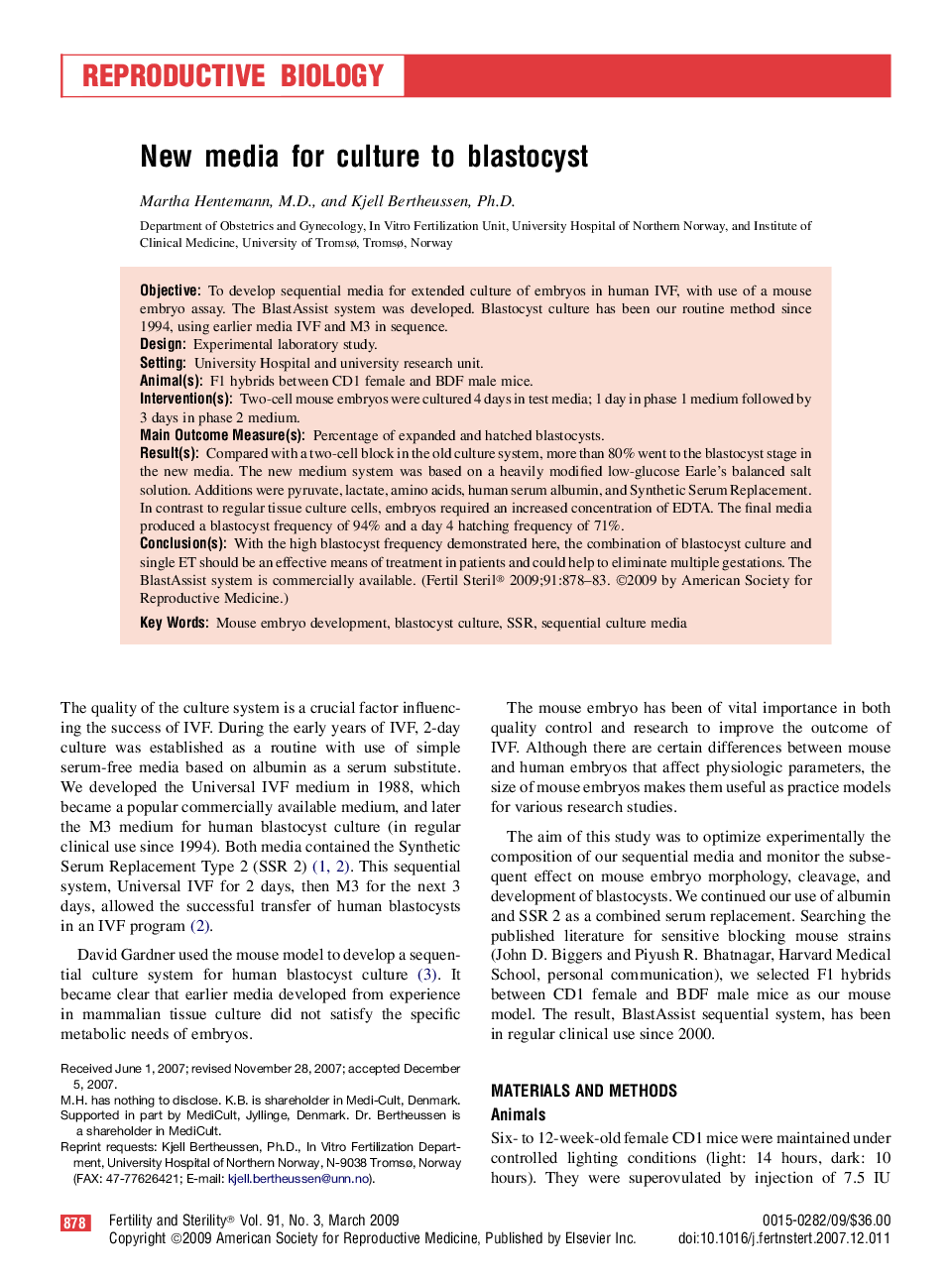| Article ID | Journal | Published Year | Pages | File Type |
|---|---|---|---|---|
| 3936976 | Fertility and Sterility | 2009 | 6 Pages |
ObjectiveTo develop sequential media for extended culture of embryos in human IVF, with use of a mouse embryo assay. The BlastAssist system was developed. Blastocyst culture has been our routine method since 1994, using earlier media IVF and M3 in sequence.DesignExperimental laboratory study.SettingUniversity Hospital and university research unit.Animal(s)F1 hybrids between CD1 female and BDF male mice.Intervention(s)Two-cell mouse embryos were cultured 4 days in test media; 1 day in phase 1 medium followed by 3 days in phase 2 medium.Main Outcome Measure(s)Percentage of expanded and hatched blastocysts.Result(s)Compared with a two-cell block in the old culture system, more than 80% went to the blastocyst stage in the new media. The new medium system was based on a heavily modified low-glucose Earle's balanced salt solution. Additions were pyruvate, lactate, amino acids, human serum albumin, and Synthetic Serum Replacement. In contrast to regular tissue culture cells, embryos required an increased concentration of EDTA. The final media produced a blastocyst frequency of 94% and a day 4 hatching frequency of 71%.Conclusion(s)With the high blastocyst frequency demonstrated here, the combination of blastocyst culture and single ET should be an effective means of treatment in patients and could help to eliminate multiple gestations. The BlastAssist system is commercially available.
